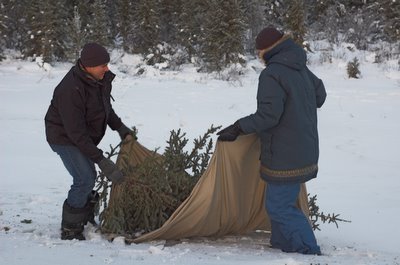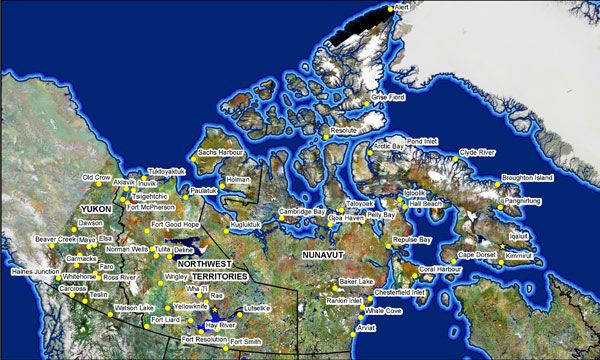Column: A Northern Christmas tree

About 20 kilometres outside of Yellowknife, thinking we just might have found the perfect Christmas tree locale, we park the vehicle. The surface of the two-foot deep snow is firm, though unable to consistently hold our weight as we walk. I look back to see my girlfriend Kate – snowpants and all – lying in a heap, still smiling after falling face first for the third time in about 20 paces.
With the weather an unseasonably warm -20 C, the spills aren’t that big of a deal, but we’ll have to work fast if we want to finish before the sun sets at 3:30 p.m.
At $1,600 per person to fly to Toronto, we decided to spend this Christmas in the North in order to save money while starting our own traditions. For the past three weeks, Kate has been making the decorations for the Northern tree we plan to saw down this afternoon.
When I arrived here in April of 2004, I found it shocking that there were any trees at all growing in the Precambrian Shield of rocks which surround Yellowknife. Who would think that rocks -- some of which are estimated at 3 billion years old -- would contain the nutrients needed to sustain any sort of life. And while they can't be classifed as anything but trees, they are of such a sickly looking nature that Charlie Brown would have a tough time picking out the perfect one for the holidays.
And after bouncing the idea off of a number of people, it appears not even other Yellowknifers support the idea of having a homegrown tree.
There was some discussion as to whether the needles on such a beanpole would last the entire holiday season. Other people told stories of having to graft together more than one tree to obtain a full look. There were recently partnered co-workers offering to sell their extra artificial trees to save us the aggravation of going out to chop one down. And there were those who believed we couldn’t cut one down without a permit.
Finally, a number of people wondered why we didn’t just buy one of the trees imported from the south. But these well-traveled natural trees sell for more than $50, and if this was to be a Northern Christmas, we were determined to have a true Arctic tree.
Now fully upright and waving her newly-purchased 14-inch saw around as an elementary school teacher would his pointer, Kate leads our group to the final spot. After some debate, we choose an eight-foot high tree sporting a two-inch thick trunk with branches about three quarters of the way around. A quick glance at other trees in the area confirms we’ve located a gem.
Down on her haunches, Kate leans into the tree. She fells it with no more than half a dozen pushes and pulls on the blade. Like a newborn child, Nathan and Kate wrap the tree in a sheet before carrying it into the back of his SUV. The drive home set against a sun setting in a sky filled with ice fog just feels good.

At home we crank the screws on the tree holder nearly as tight as they can go to hold our trophy upright, then turn it such that the nearly barren side faces the wall.
The homemade tree decorations are brought out. Orange slices which had been drying on top of the fridge are strung with ribbon. Little drums made out of toilet paper rolls covered with brightly coloured construction paper are hung on the branches. Musical lights covered by clear plastic bells – a one-dollar Yellowknife garage sale pick up – are laid close to the body of our malnourished specimen to keep the branches from bending.
Against a now pitch black sky, we turn on the lights and debate the merits of our find.
“It’s nature,” says Kate.
“But nature can do better,” Nathan says.
“Not up here it can’t,” she says.
But this is our piece of nature. When you stand in the dark and look at it with the clear plastic bells lit up, it really does look pretty good.
So this is Christmas.



